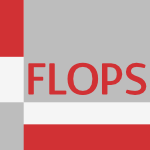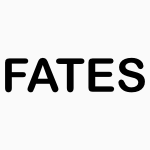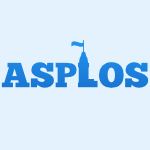107 papers:
 CASE-2015-ZouLLJX #locality #online
CASE-2015-ZouLLJX #locality #online- A mutual information based online access point selection strategy for WiFi indoor localization (HZ, YL, XL, HJ, LX), pp. 180–185.
 HCI-DE-2015-BakkeB #developer #learning #proximity
HCI-DE-2015-BakkeB #developer #learning #proximity- The Closer the Better: Effects of Developer-User Proximity for Mutual Learning (SB, TB), pp. 14–26.
 HIMI-IKC-2015-KurihashiMT #self
HIMI-IKC-2015-KurihashiMT #self- Self-perception of Assister Driver Responsibility and Contribution in Mutual Assistance System (SK, YM, KT), pp. 233–242.
 SAC-2015-GouthamLY #authentication #protocol #smarttech #using
SAC-2015-GouthamLY #authentication #protocol #smarttech #using- An anonymous ID-based remote mutual authentication with key agreement protocol on ECC using smart cards (RAG, GJL, KYY), pp. 169–174.
 SAC-2015-MinsamS #game studies
SAC-2015-MinsamS #game studies- Sustaining mutual cooperation in iterated prisoner’s dilemma game (KM, KYS), pp. 335–337.
 SAC-2015-NonnenmacherOBV #modelling #process
SAC-2015-NonnenmacherOBV #modelling #process- Modelling consumers decision-making process about excluding products as a result of mutual influence (VN, LPLdO, BEJB, MBV), pp. 1123–1128.
 DATE-2014-HaddadTBF #independence #modelling #on the #probability
DATE-2014-HaddadTBF #independence #modelling #on the #probability- On the assumption of mutual independence of jitter realizations in P-TRNG stochastic models (PH, YT, FB, VF), pp. 1–6.
 CSCW-2014-MunsonKRR #email #monitoring #performance
CSCW-2014-MunsonKRR #email #monitoring #performance- Monitoring email to indicate project team performance and mutual attraction (SAM, KK, LPRJ), pp. 542–549.
 ICML-c2-2014-ContalPV #optimisation #process
ICML-c2-2014-ContalPV #optimisation #process- Gaussian Process Optimization with Mutual Information (EC, VP, NV), pp. 253–261.
 ICML-c2-2014-RomanoBNV #clustering #standard
ICML-c2-2014-RomanoBNV #clustering #standard- Standardized Mutual Information for Clustering Comparisons: One Step Further in Adjustment for Chance (SR, JB, XVN, KV), pp. 1143–1151.
 ICPR-2014-EscolanoH #graph
ICPR-2014-EscolanoH #graph- The Mutual Information between Graphs (FE, ERH), pp. 94–99.
 KDD-2014-FuXGYZZ #clustering #dependence #ranking
KDD-2014-FuXGYZZ #clustering #dependence #ranking- Exploiting geographic dependencies for real estate appraisal: a mutual perspective of ranking and clustering (YF, HX, YG, ZY, YZ, ZHZ), pp. 1047–1056.
 KDD-2014-NguyenCRB #effectiveness #feature model
KDD-2014-NguyenCRB #effectiveness #feature model- Effective global approaches for mutual information based feature selection (XVN, JC, SR, JB), pp. 512–521.
 CSCW-2013-SingerFCTSS #assessment #developer #ecosystem #empirical #social
CSCW-2013-SingerFCTSS #assessment #developer #ecosystem #empirical #social- Mutual assessment in the social programmer ecosystem: an empirical investigation of developer profile aggregators (LS, FMFF, BC, CT, MADS, KS), pp. 103–116.
 HCI-AMTE-2013-ErturanBTCYO #comprehension #mobile #representation
HCI-AMTE-2013-ErturanBTCYO #comprehension #mobile #representation- A Mobile Application Flow Representation for Mutual Understanding of IT and Healthcare Professionals (YNE, SB, GT, NEÇ, EY, EÖ), pp. 310–319.
 ICML-c2-2013-YangZ #process
ICML-c2-2013-YangZ #process- Mixture of Mutually Exciting Processes for Viral Diffusion (SHY, HZ), pp. 1–9.
 ICML-c3-2013-NiuJDHS #approach #learning #novel
ICML-c3-2013-NiuJDHS #approach #learning #novel- Squared-loss Mutual Information Regularization: A Novel Information-theoretic Approach to Semi-supervised Learning (GN, WJ, BD, HH, MS), pp. 10–18.
 SIGIR-2013-GolbusA #analysis #framework #information retrieval
SIGIR-2013-GolbusA #analysis #framework #information retrieval- A mutual information-based framework for the analysis of information retrieval systems (PBG, JAA), pp. 683–692.
 REFSQ-2013-HoffmannBL #comprehension #development #process
REFSQ-2013-HoffmannBL #comprehension #development #process- The Emergence of Mutual and Shared Understanding in the System Development Process (AH, EACB, JML), pp. 174–189.
 HT-2012-SuzukiY #editing #named #quality #wiki
HT-2012-SuzukiY #editing #named #quality #wiki- QualityRank: assessing quality of wikipedia articles by mutually evaluating editors and texts (YS, MY), pp. 307–308.
 STOC-2012-BansalBJK #trade-off
STOC-2012-BansalBJK #trade-off- Tight time-space tradeoff for mutual exclusion (NB, VB, PJ, RK), pp. 971–982.
 STOC-2012-GiakkoupisW #bound #random
STOC-2012-GiakkoupisW #bound #random- A tight RMR lower bound for randomized mutual exclusion (GG, PW), pp. 983–1002.
 FLOPS-2012-KrienerK
FLOPS-2012-KrienerK- Mutual Exclusion by Interpolation (JK, AK), pp. 182–196.
 CIKM-2012-JiangSZ #effectiveness #ranking #towards
CIKM-2012-JiangSZ #effectiveness #ranking #towards- Towards an effective and unbiased ranking of scientific literature through mutual reinforcement (XJ, XS, HZ), pp. 714–723.
 ICPR-2012-BeinruckerDB #feature model
ICPR-2012-BeinruckerDB #feature model- Early stopping for mutual information based feature selection (AB, UD, GB), pp. 975–978.
 ICPR-2012-LuLZSCO #using
ICPR-2012-LuLZSCO #using- Learning-based deformable registration using weighted mutual information (YL, RL, LZ, YS, CC, SHO), pp. 2626–2629.
 ICPR-2012-MoriyamaAS #analysis #using
ICPR-2012-MoriyamaAS #analysis #using- Face analysis of aggressive moods in automobile driving using mutual subspace method (TM, KA, NS), pp. 2898–2901.
 ICPR-2012-Utasi #classification #dataset
ICPR-2012-Utasi #classification #dataset- Weighted conditional mutual information based boosting for classification of imbalanced datasets (ÁU), pp. 2711–2714.
 ECMFA-2012-Zhang #aspect-oriented #modelling #state machine #uml
ECMFA-2012-Zhang #aspect-oriented #modelling #state machine #uml- Aspect-Oriented Modeling of Mutual Exclusion in UML State Machines (GZ), pp. 162–177.
 DATE-2011-DraneC #optimisation
DATE-2011-DraneC #optimisation- Optimisation of mutually exclusive arithmetic sum-of-products (TD, GAC), pp. 1388–1393.
 ICEIS-v2-2011-ZhuL
ICEIS-v2-2011-ZhuL- Mutual Interdependence of Stock Markets based on Support Vector Machine (MZ, JL), pp. 218–221.
 KDIR-2011-RoleN #case study #metric #similarity #word
KDIR-2011-RoleN #case study #metric #similarity #word- Handling the Impact of Low Frequency Events on Co-occurrence based Measures of Word Similarity — A Case Study of Pointwise Mutual Information (FR, MN), pp. 226–231.
 ICEIS-DISI-2010-LibourelLMPD #framework
ICEIS-DISI-2010-LibourelLMPD #framework- A Platform Dedicated to Share and Mutualize Environmental Applications (TL, YL, IM, CP, JCD), pp. 50–57.
 CIKM-2010-BurghardtBGC #question
CIKM-2010-BurghardtBGC #question- Search-log anonymization and advertisement: are they mutually exclusive? (TB, KB, AG, CC), pp. 1269–1272.
 ICPR-2010-SakarK #analysis #canonical #correlation #feature model #hybrid
ICPR-2010-SakarK #analysis #canonical #correlation #feature model #hybrid- A Hybrid Method for Feature Selection Based on Mutual Information and Canonical Correlation Analysis (COS, OK), pp. 4360–4363.
 SIGIR-2010-KarimzadehganZ #ad hoc #estimation #information retrieval #modelling #statistics
SIGIR-2010-KarimzadehganZ #ad hoc #estimation #information retrieval #modelling #statistics- Estimation of statistical translation models based on mutual information for ad hoc information retrieval (MK, CZ), pp. 323–330.
 ICFP-2009-YakushevHLJ #data type #fixpoint #programming #recursion
ICFP-2009-YakushevHLJ #data type #fixpoint #programming #recursion- Generic programming with fixed points for mutually recursive datatypes (ARY, SH, AL, JJ), pp. 233–244.
 DATE-2008-SrivastavaSB #multi
DATE-2008-SrivastavaSB #multi- High-Frequency Mutual Impedance Extraction of VLSI Interconnects In the Presence of a Multi-layer Conducting Substrate (NS, RS, KB), pp. 426–431.
 DRR-2008-XiuB #adaptation #recognition #using
DRR-2008-XiuB #adaptation #recognition #using- Whole-book recognition using mutual-entropy-driven model adaptation (PX, HSB), p. 681506.
 ITiCSE-2008-Rubio-SanchezUP #recursion
ITiCSE-2008-Rubio-SanchezUP #recursion- A gentle introduction to mutual recursion (MRS, JUF, CPF), pp. 235–239.
 TACAS-2008-KatzP #model checking #programming #search-based
TACAS-2008-KatzP #model checking #programming #search-based- Model Checking-Based Genetic Programming with an Application to Mutual Exclusion (GK, DP), pp. 141–156.
 STOC-2008-AttiyaHW #bound #problem
STOC-2008-AttiyaHW #bound #problem- Tight rmr lower bounds for mutual exclusion and other problems (HA, DH, PW), pp. 217–226.
 CSCW-2008-KuzuokaPSKYYKLH
CSCW-2008-KuzuokaPSKYYKLH- Effect of restarts and pauses on achieving a state of mutual orientation between a human and a robot (HK, KP, YS, IK, KY, AY, YK, PL, CH), pp. 201–204.
 ICPR-2008-SakaueS
ICPR-2008-SakaueS- Calibration of projector-camera systems from virtual mutual projection (FS, JS), pp. 1–4.
 ICPR-2008-WanS #geometry #multi
ICPR-2008-WanS #geometry #multi- Computing multiple view geometry in space-time from mutual projections of multiple cameras (CW, JS), pp. 1–4.
 ICPR-2008-ZhangD #comprehension #visual notation
ICPR-2008-ZhangD #comprehension #visual notation- Understanding visual dictionaries via Maximum Mutual Information curves (WZ, HD), pp. 1–4.
 SEKE-2008-Morasca #assessment #empirical
SEKE-2008-Morasca #assessment #empirical- Subjective Assessment of the Mutual Influence of ISO 9126 Software Qualities: an Empirical Study (SM), pp. 297–302.
 SIGIR-2008-WeiLLH #multi #query #summary
SIGIR-2008-WeiLLH #multi #query #summary- Query-sensitive mutual reinforcement chain and its application in query-oriented multi-document summarization (FW, WL, QL, YH), pp. 283–290.
 POPL-2008-AbadiBHI #automation #memory management #semantics #transaction
POPL-2008-AbadiBHI #automation #memory management #semantics #transaction- Semantics of transactional memory and automatic mutual exclusion (MA, AB, TH, MI), pp. 63–74.
 ECIR-2007-MartinetS #documentation #using
ECIR-2007-MartinetS #documentation #using- Using Visual-Textual Mutual Information and Entropy for Inter-modal Document Indexing (JM, SS), pp. 549–556.
 CIKM-2006-SunZZY #multi #segmentation
CIKM-2006-SunZZY #multi #segmentation- Multi-task text segmentation and alignment based on weighted mutual information (BS, DZ, HZ, JY), pp. 846–847.
 ICPR-v1-2006-ArandjelovicC #classification #set #using
ICPR-v1-2006-ArandjelovicC #classification #set #using- Face Set Classification using Maximally Probable Mutual Modes (OA, RC), pp. 511–514.
 ICPR-v2-2006-DowsonBK #image #using
ICPR-v2-2006-DowsonBK #image #using- Image template matching using Mutual Information and NP-Windows (NDHD, RB, TK), pp. 1186–1191.
 ICPR-v2-2006-HuangCX #feature model
ICPR-v2-2006-HuangCX #feature model- A Wrapper for Feature Selection Based on Mutual Information (JH, YC, XX), pp. 618–621.
 ICPR-v2-2006-UsoPSG #clustering #multi #using
ICPR-v2-2006-UsoPSG #clustering #multi #using- Clustering-based multispectral band selection using mutual information (AMU, FP, JMS, PGS), pp. 760–763.
 ICPR-v3-2006-GuoL #image #multi #using
ICPR-v3-2006-GuoL #image #multi #using- Multi-modality Image Registration Using Mutual Information Based on Gradient Vector Flow (YG, CCL), pp. 697–700.
 KDD-2006-YooHS #clustering #graph #integration #refinement #representation #semantics
KDD-2006-YooHS #clustering #graph #integration #refinement #representation #semantics- Integration of semantic-based bipartite graph representation and mutual refinement strategy for biomedical literature clustering (IY, XH, IYS), pp. 791–796.
 AdaEurope-2005-Brosgol #ada #comparison #java #realtime #specification
AdaEurope-2005-Brosgol #ada #comparison #java #realtime #specification- A Comparison of the Mutual Exclusion Features in Ada and the Real-Time Specification for Java TM (BMB), pp. 129–143.
 KDD-2005-YanFB #constraints #industrial
KDD-2005-YanFB #constraints #industrial- Enhancing the lift under budget constraints: an application in the mutual fund industry (LY, MF, PB), pp. 509–515.
 CIKM-2004-WangL #categorisation #feature model
CIKM-2004-WangL #categorisation #feature model- Feature selection with conditional mutual information maximin in text categorization (GW, FHL), pp. 342–349.
 ICPR-v1-2004-SugimuraS #re-engineering
ICPR-v1-2004-SugimuraS #re-engineering- Camera Calibration and Reconstruction from the Chain Connection of Mutual Camera Projections (YS, JS), pp. 100–103.
 ICPR-v2-2004-DowsonB #metric
ICPR-v2-2004-DowsonB #metric- Metric Mixtures for Mutual Information (M^3 I) Tracking (NDHD, RB), pp. 752–756.
 ICPR-v2-2004-IkedaIA #optimisation
ICPR-v2-2004-IkedaIA #optimisation- Sensor Fusion as Optimization: Maximizing Mutual Information between Sensory Signals (TI, HI, MA), pp. 501–504.
 ICPR-v2-2004-LourakisAM #approach #graph #information management #similarity #using
ICPR-v2-2004-LourakisAM #approach #graph #information management #similarity #using- A Graph-Based Approach to Corner Matching Using Mutual Information as a Local Similarity Measure (MIAL, AAA, KM), pp. 827–830.
 ICPR-v3-2004-LiewWY #classification #sequence #statistics
ICPR-v3-2004-LiewWY #classification #sequence #statistics- Selection of Statistical Features Based on Mutual Information for Classification of Human Coding and Non-coding DNA Sequences (AWCL, YW, HY), pp. 766–769.
 MLDM-2003-Sy
MLDM-2003-Sy- Discovering Association Patterns Based on Mutual Information (BKS), pp. 369–378.
 FATES-2003-XieN #generative #specification #testing
FATES-2003-XieN #generative #specification #testing- Mutually Enhancing Test Generation and Specification Inference (TX, DN), pp. 60–69.
 CSCW-2002-Jouppi #mobile #towards
CSCW-2002-Jouppi #mobile #towards- First steps towards mutually-immersive mobile telepresence (NPJ), pp. 354–363.
 ICML-2002-OliverG #markov #modelling #named
ICML-2002-OliverG #markov #modelling #named- MMIHMM: Maximum Mutual Information Hidden Markov Models (NO, AG), pp. 466–473.
 ICPR-v2-2002-FookesBL #image #using
ICPR-v2-2002-FookesBL #image #using- Improved Stereo Image Matching Using Mutual Information and Hierarchical Prior Probabilities (CF, MB, AL), pp. 937–940.
 ICPR-v3-2002-ItoSS
ICPR-v3-2002-ItoSS- Recovering Structures and Motions from Mutual Projection of Cameras (MI, TS, JS), pp. 676–679.
 ICPR-v3-2002-SuvegV #3d #evaluation #modelling
ICPR-v3-2002-SuvegV #3d #evaluation #modelling- Mutual Information Based Evaluation of 3D Building Models (IS, GV), pp. 557–560.
 ICPR-v4-2002-Al-AniD #feature model
ICPR-v4-2002-Al-AniD #feature model- Feature Selection sing a Mutual Information Based Measure (AAA, MD), pp. 82–85.
 SIGIR-2002-Zha #clustering #summary #using
SIGIR-2002-Zha #clustering #summary #using- Generic summarization and keyphrase extraction using mutual reinforcement principle and sentence clustering (HZ), pp. 113–120.
 ICDAR-2001-FreitasBS #approach #recognition #set #validation #word
ICDAR-2001-FreitasBS #approach #recognition #set #validation #word- Handwritten Isolated Word Recognition: An Approach Based on Mutual Information for Feature Set Validation (COdAF, FB, RS), pp. 665–669.
 ICEIS-v2-2001-AraujoM #diagrams #uml
ICEIS-v2-2001-AraujoM #diagrams #uml- Handling Mutual Exclusion in UML Class Diagrams (JA, AMDM), pp. 659–666.
 RE-2001-Lowry #question #requirements #synthesis
RE-2001-Lowry #question #requirements #synthesis- Requirements Engineering and Program Synthesis: Mutually Exclusive or Synergistic? (MRL), pp. 12–13.
 SAC-2001-HousniTKP #algorithm #distributed
SAC-2001-HousniTKP #algorithm #distributed- A new distributed mutual exclusion algorithm for two groups (AH, MT, MSK, MSP), pp. 531–538.
 ICML-2000-TorkkolaC #learning
ICML-2000-TorkkolaC #learning- Mutual Information in Learning Feature Transformations (KT, WMC), pp. 1015–1022.
 ICPR-v4-2000-OnishiIF #image #video
ICPR-v4-2000-OnishiIF #image #video- Production of Video Images by Computer Controlled Camera Operation Based on Distribution of Spatiotemporal Mutual Information (MO, MI, KF), pp. 4102–4105.
 CL-2000-BoultonS #automation #induction #recursion
CL-2000-BoultonS #automation #induction #recursion- Automatic Derivation and Application of Induction Schemes for Mutually Recursive Functions (RJB, KS), pp. 629–643.
 CHI-1999-Oviatt #ambiguity #architecture #fault #multi #recognition
CHI-1999-Oviatt #ambiguity #architecture #fault #multi #recognition- Mutual Disambiguation of Recognition Errors in a Multimodel Architecture (SLO), pp. 576–583.
 SAC-1999-ArakiIK #detection
SAC-1999-ArakiIK #detection- Detection and Correction of Mutually Interfered Erroneous Characters in Japanese Texts (TA, SI, YK), pp. 36–40.
 DAC-1998-KaoNC
DAC-1998-KaoNC- MTCMOS Hierarchical Sizing Based on Mutual Exclusive Discharge Patterns (JK, SN, AC), pp. 495–500.
 DATE-1998-LiG #algorithm #behaviour
DATE-1998-LiG #algorithm #behaviour- An Algorithm To Determine Mutually Exclusive Operations In Behavioral Descriptions (JL, RKG), pp. 457–463.
 SIGMOD-1998-AndersonBKW #consistency #question #replication
SIGMOD-1998-AndersonBKW #consistency #question #replication- Replication, Consistency, and Practicality: Are These Mutually Exclusive? (TAA, YB, HFK, AW), pp. 484–495.
 TACAS-1998-JensenL #abstraction #algorithm #proving #using
TACAS-1998-JensenL #abstraction #algorithm #proving #using- A Proof of Burns N-Process Mutual Exclusion Algorithm Using Abstraction (HEJ, NAL), pp. 409–423.
 FLOPS-1998-IwasakiHT #recursion #towards
FLOPS-1998-IwasakiHT #recursion #towards- Towards Manipulation of Mutually Recursive Functions (HI, ZH, MT), pp. 61–79.
 CSCW-1998-HindmarshFHBG #interactive
CSCW-1998-HindmarshFHBG #interactive- Fragmented Interaction: Establishing Mutual Orientation in Virtual Environments (JH, MF, CH, SB, CG), pp. 217–226.
 CHI-1997-PedersenS #named #representation
CHI-1997-PedersenS #named #representation- AROMA: Abstract Representation of Presence Supporting Mutual Awareness (ERP, TS), pp. 51–58.
 HCI-SEC-1997-FukushimaY #adaptation
HCI-SEC-1997-FukushimaY #adaptation- Application of a Newly Developed Eye Sensing Head-Mounted-Display to a Mutual Adaptive CAI for Plant-Diagnosis (SF, HY), pp. 225–228.
 ICPR-1996-BollackerG #linear
ICPR-1996-BollackerG #linear- Linear feature extractors based on mutual information (KDB, JG), pp. 720–724.
 ICPR-1996-ZanardiHC #interactive #learning #mobile
ICPR-1996-ZanardiHC #interactive #learning #mobile- Mutual learning or unsupervised interactions between mobile robots (CZ, JYH, PC), pp. 40–44.
 CADE-1996-HomeierM #recursion #verification
CADE-1996-HomeierM #recursion #verification- Mechanical Verification of Mutually Recursive Procedures (PVH, DFM), pp. 201–215.
 STOC-1994-YangA #bound #problem
STOC-1994-YangA #bound #problem- Time bounds for mutual exclusion and related problems (JHY, JHA), pp. 224–233.
 KR-1994-Meyden
KR-1994-Meyden- Mutual Belief Revision (Preliminary Report) (RvdM), pp. 595–606.
 STOC-1993-KushilevitzMRZ #bound #random
STOC-1993-KushilevitzMRZ #bound #random- Lower bounds for randomized mutual exclusion (EK, YM, MOR, DZ), pp. 154–163.
 CIKM-1993-ZhengR #hypermedia
CIKM-1993-ZhengR #hypermedia- Text-Hypertext Mutual Conversion and Hypertext Interchange through SGML (MZ, RR), pp. 139–147.
 ASPLOS-1992-BershadRE #performance
ASPLOS-1992-BershadRE #performance- Fast Mutual Exclusion for Uniprocessors (BNB, DDR, JRE), pp. 223–233.
 JICSLP-1992-GrogerP #automation #logic programming #proving #recursion #source code #termination
JICSLP-1992-GrogerP #automation #logic programming #proving #recursion #source code #termination- Handling of Mutual Recursion in Automatic Termination Proofs for Logic Programs (GG, LP), pp. 336–350.
 ML-1991-KedarBD #approximate #refinement
ML-1991-KedarBD #approximate #refinement- The Blind Leading the Blind: Mutual Refinement of Approximate Theories (SK, JLB, CLD), pp. 308–312.
 VDME-1988-Haxthausen #algebra #equation #recursion
VDME-1988-Haxthausen #algebra #equation #recursion- Mutually Recursive Algebraic Domain Equations (AEH), pp. 299–317.
 ICALP-1983-CohenLP #distributed #problem #symmetry
ICALP-1983-CohenLP #distributed #problem #symmetry- Symmetric and Economical Solutions to the Mutual Exclusion Problem in a Distributed System (Extended Abstract) (SC, DJL, AP), pp. 128–136.
 VLDB-1979-MendelzonM #composition #database #dependence
VLDB-1979-MendelzonM #composition #database #dependence- Generalized Mutual Dependencies and the Decomposition of Database Relations (AOM, DM), pp. 75–82.
 SIGMOD-1978-Nicolas #dependence #first-order #formal method #functional #logic #multi
SIGMOD-1978-Nicolas #dependence #first-order #formal method #functional #logic #multi- First Order Logic Formalization for Functional, Multivalued and Mutual Dependencies (JMN), pp. 40–46.
 VLDB-1978-Nicolas #dependence
VLDB-1978-Nicolas #dependence- Mutual Dependencies and Some Results on Undecomposable Relations (JMN), pp. 360–367.
 ICALP-1978-CremersH #using
ICALP-1978-CremersH #using- Mutual Exclusion of N Processors Using an O(N)-Valued Message Variable (Extended Abstract) (ABC, TNH), pp. 165–176.
 CASE-2015-ZouLLJX #locality #online
CASE-2015-ZouLLJX #locality #online HCI-DE-2015-BakkeB #developer #learning #proximity
HCI-DE-2015-BakkeB #developer #learning #proximity HIMI-IKC-2015-KurihashiMT #self
HIMI-IKC-2015-KurihashiMT #self SAC-2015-GouthamLY #authentication #protocol #smarttech #using
SAC-2015-GouthamLY #authentication #protocol #smarttech #using SAC-2015-MinsamS #game studies
SAC-2015-MinsamS #game studies SAC-2015-NonnenmacherOBV #modelling #process
SAC-2015-NonnenmacherOBV #modelling #process DATE-2014-HaddadTBF #independence #modelling #on the #probability
DATE-2014-HaddadTBF #independence #modelling #on the #probability CSCW-2014-MunsonKRR #email #monitoring #performance
CSCW-2014-MunsonKRR #email #monitoring #performance ICML-c2-2014-ContalPV #optimisation #process
ICML-c2-2014-ContalPV #optimisation #process ICML-c2-2014-RomanoBNV #clustering #standard
ICML-c2-2014-RomanoBNV #clustering #standard ICPR-2014-EscolanoH #graph
ICPR-2014-EscolanoH #graph KDD-2014-FuXGYZZ #clustering #dependence #ranking
KDD-2014-FuXGYZZ #clustering #dependence #ranking KDD-2014-NguyenCRB #effectiveness #feature model
KDD-2014-NguyenCRB #effectiveness #feature model CSCW-2013-SingerFCTSS #assessment #developer #ecosystem #empirical #social
CSCW-2013-SingerFCTSS #assessment #developer #ecosystem #empirical #social HCI-AMTE-2013-ErturanBTCYO #comprehension #mobile #representation
HCI-AMTE-2013-ErturanBTCYO #comprehension #mobile #representation ICML-c2-2013-YangZ #process
ICML-c2-2013-YangZ #process ICML-c3-2013-NiuJDHS #approach #learning #novel
ICML-c3-2013-NiuJDHS #approach #learning #novel SIGIR-2013-GolbusA #analysis #framework #information retrieval
SIGIR-2013-GolbusA #analysis #framework #information retrieval REFSQ-2013-HoffmannBL #comprehension #development #process
REFSQ-2013-HoffmannBL #comprehension #development #process HT-2012-SuzukiY #editing #named #quality #wiki
HT-2012-SuzukiY #editing #named #quality #wiki STOC-2012-BansalBJK #trade-off
STOC-2012-BansalBJK #trade-off STOC-2012-GiakkoupisW #bound #random
STOC-2012-GiakkoupisW #bound #random FLOPS-2012-KrienerK
FLOPS-2012-KrienerK CIKM-2012-JiangSZ #effectiveness #ranking #towards
CIKM-2012-JiangSZ #effectiveness #ranking #towards ICPR-2012-BeinruckerDB #feature model
ICPR-2012-BeinruckerDB #feature model ICPR-2012-LuLZSCO #using
ICPR-2012-LuLZSCO #using ICPR-2012-MoriyamaAS #analysis #using
ICPR-2012-MoriyamaAS #analysis #using ICPR-2012-Utasi #classification #dataset
ICPR-2012-Utasi #classification #dataset ECMFA-2012-Zhang #aspect-oriented #modelling #state machine #uml
ECMFA-2012-Zhang #aspect-oriented #modelling #state machine #uml DATE-2011-DraneC #optimisation
DATE-2011-DraneC #optimisation ICEIS-v2-2011-ZhuL
ICEIS-v2-2011-ZhuL KDIR-2011-RoleN #case study #metric #similarity #word
KDIR-2011-RoleN #case study #metric #similarity #word ICEIS-DISI-2010-LibourelLMPD #framework
ICEIS-DISI-2010-LibourelLMPD #framework CIKM-2010-BurghardtBGC #question
CIKM-2010-BurghardtBGC #question ICPR-2010-SakarK #analysis #canonical #correlation #feature model #hybrid
ICPR-2010-SakarK #analysis #canonical #correlation #feature model #hybrid SIGIR-2010-KarimzadehganZ #ad hoc #estimation #information retrieval #modelling #statistics
SIGIR-2010-KarimzadehganZ #ad hoc #estimation #information retrieval #modelling #statistics ICFP-2009-YakushevHLJ #data type #fixpoint #programming #recursion
ICFP-2009-YakushevHLJ #data type #fixpoint #programming #recursion DATE-2008-SrivastavaSB #multi
DATE-2008-SrivastavaSB #multi DRR-2008-XiuB #adaptation #recognition #using
DRR-2008-XiuB #adaptation #recognition #using ITiCSE-2008-Rubio-SanchezUP #recursion
ITiCSE-2008-Rubio-SanchezUP #recursion TACAS-2008-KatzP #model checking #programming #search-based
TACAS-2008-KatzP #model checking #programming #search-based STOC-2008-AttiyaHW #bound #problem
STOC-2008-AttiyaHW #bound #problem CSCW-2008-KuzuokaPSKYYKLH
CSCW-2008-KuzuokaPSKYYKLH ICPR-2008-SakaueS
ICPR-2008-SakaueS ICPR-2008-WanS #geometry #multi
ICPR-2008-WanS #geometry #multi ICPR-2008-ZhangD #comprehension #visual notation
ICPR-2008-ZhangD #comprehension #visual notation SEKE-2008-Morasca #assessment #empirical
SEKE-2008-Morasca #assessment #empirical SIGIR-2008-WeiLLH #multi #query #summary
SIGIR-2008-WeiLLH #multi #query #summary POPL-2008-AbadiBHI #automation #memory management #semantics #transaction
POPL-2008-AbadiBHI #automation #memory management #semantics #transaction ECIR-2007-MartinetS #documentation #using
ECIR-2007-MartinetS #documentation #using CIKM-2006-SunZZY #multi #segmentation
CIKM-2006-SunZZY #multi #segmentation ICPR-v1-2006-ArandjelovicC #classification #set #using
ICPR-v1-2006-ArandjelovicC #classification #set #using ICPR-v2-2006-DowsonBK #image #using
ICPR-v2-2006-DowsonBK #image #using ICPR-v2-2006-HuangCX #feature model
ICPR-v2-2006-HuangCX #feature model ICPR-v2-2006-UsoPSG #clustering #multi #using
ICPR-v2-2006-UsoPSG #clustering #multi #using ICPR-v3-2006-GuoL #image #multi #using
ICPR-v3-2006-GuoL #image #multi #using KDD-2006-YooHS #clustering #graph #integration #refinement #representation #semantics
KDD-2006-YooHS #clustering #graph #integration #refinement #representation #semantics AdaEurope-2005-Brosgol #ada #comparison #java #realtime #specification
AdaEurope-2005-Brosgol #ada #comparison #java #realtime #specification KDD-2005-YanFB #constraints #industrial
KDD-2005-YanFB #constraints #industrial CIKM-2004-WangL #categorisation #feature model
CIKM-2004-WangL #categorisation #feature model ICPR-v1-2004-SugimuraS #re-engineering
ICPR-v1-2004-SugimuraS #re-engineering ICPR-v2-2004-DowsonB #metric
ICPR-v2-2004-DowsonB #metric ICPR-v2-2004-IkedaIA #optimisation
ICPR-v2-2004-IkedaIA #optimisation ICPR-v2-2004-LourakisAM #approach #graph #information management #similarity #using
ICPR-v2-2004-LourakisAM #approach #graph #information management #similarity #using ICPR-v3-2004-LiewWY #classification #sequence #statistics
ICPR-v3-2004-LiewWY #classification #sequence #statistics MLDM-2003-Sy
MLDM-2003-Sy FATES-2003-XieN #generative #specification #testing
FATES-2003-XieN #generative #specification #testing CSCW-2002-Jouppi #mobile #towards
CSCW-2002-Jouppi #mobile #towards ICML-2002-OliverG #markov #modelling #named
ICML-2002-OliverG #markov #modelling #named ICPR-v2-2002-FookesBL #image #using
ICPR-v2-2002-FookesBL #image #using ICPR-v3-2002-ItoSS
ICPR-v3-2002-ItoSS ICPR-v3-2002-SuvegV #3d #evaluation #modelling
ICPR-v3-2002-SuvegV #3d #evaluation #modelling ICPR-v4-2002-Al-AniD #feature model
ICPR-v4-2002-Al-AniD #feature model SIGIR-2002-Zha #clustering #summary #using
SIGIR-2002-Zha #clustering #summary #using ICDAR-2001-FreitasBS #approach #recognition #set #validation #word
ICDAR-2001-FreitasBS #approach #recognition #set #validation #word ICEIS-v2-2001-AraujoM #diagrams #uml
ICEIS-v2-2001-AraujoM #diagrams #uml RE-2001-Lowry #question #requirements #synthesis
RE-2001-Lowry #question #requirements #synthesis SAC-2001-HousniTKP #algorithm #distributed
SAC-2001-HousniTKP #algorithm #distributed ICML-2000-TorkkolaC #learning
ICML-2000-TorkkolaC #learning ICPR-v4-2000-OnishiIF #image #video
ICPR-v4-2000-OnishiIF #image #video CL-2000-BoultonS #automation #induction #recursion
CL-2000-BoultonS #automation #induction #recursion CHI-1999-Oviatt #ambiguity #architecture #fault #multi #recognition
CHI-1999-Oviatt #ambiguity #architecture #fault #multi #recognition SAC-1999-ArakiIK #detection
SAC-1999-ArakiIK #detection DAC-1998-KaoNC
DAC-1998-KaoNC DATE-1998-LiG #algorithm #behaviour
DATE-1998-LiG #algorithm #behaviour SIGMOD-1998-AndersonBKW #consistency #question #replication
SIGMOD-1998-AndersonBKW #consistency #question #replication TACAS-1998-JensenL #abstraction #algorithm #proving #using
TACAS-1998-JensenL #abstraction #algorithm #proving #using FLOPS-1998-IwasakiHT #recursion #towards
FLOPS-1998-IwasakiHT #recursion #towards CSCW-1998-HindmarshFHBG #interactive
CSCW-1998-HindmarshFHBG #interactive CHI-1997-PedersenS #named #representation
CHI-1997-PedersenS #named #representation HCI-SEC-1997-FukushimaY #adaptation
HCI-SEC-1997-FukushimaY #adaptation ICPR-1996-BollackerG #linear
ICPR-1996-BollackerG #linear ICPR-1996-ZanardiHC #interactive #learning #mobile
ICPR-1996-ZanardiHC #interactive #learning #mobile CADE-1996-HomeierM #recursion #verification
CADE-1996-HomeierM #recursion #verification STOC-1994-YangA #bound #problem
STOC-1994-YangA #bound #problem KR-1994-Meyden
KR-1994-Meyden STOC-1993-KushilevitzMRZ #bound #random
STOC-1993-KushilevitzMRZ #bound #random CIKM-1993-ZhengR #hypermedia
CIKM-1993-ZhengR #hypermedia ASPLOS-1992-BershadRE #performance
ASPLOS-1992-BershadRE #performance JICSLP-1992-GrogerP #automation #logic programming #proving #recursion #source code #termination
JICSLP-1992-GrogerP #automation #logic programming #proving #recursion #source code #termination ML-1991-KedarBD #approximate #refinement
ML-1991-KedarBD #approximate #refinement VDME-1988-Haxthausen #algebra #equation #recursion
VDME-1988-Haxthausen #algebra #equation #recursion ICALP-1983-CohenLP #distributed #problem #symmetry
ICALP-1983-CohenLP #distributed #problem #symmetry VLDB-1979-MendelzonM #composition #database #dependence
VLDB-1979-MendelzonM #composition #database #dependence SIGMOD-1978-Nicolas #dependence #first-order #formal method #functional #logic #multi
SIGMOD-1978-Nicolas #dependence #first-order #formal method #functional #logic #multi VLDB-1978-Nicolas #dependence
VLDB-1978-Nicolas #dependence ICALP-1978-CremersH #using
ICALP-1978-CremersH #using









